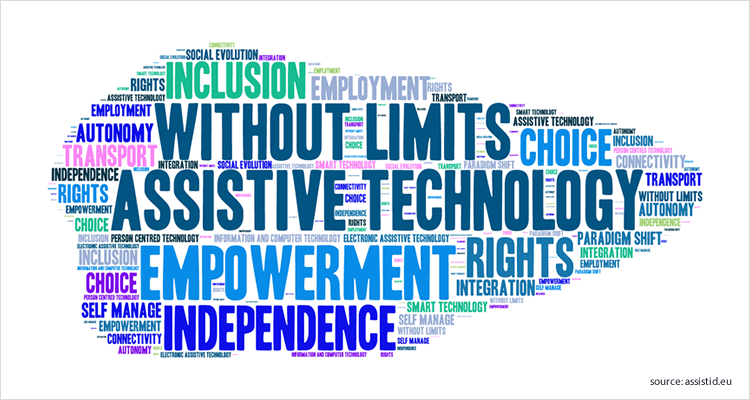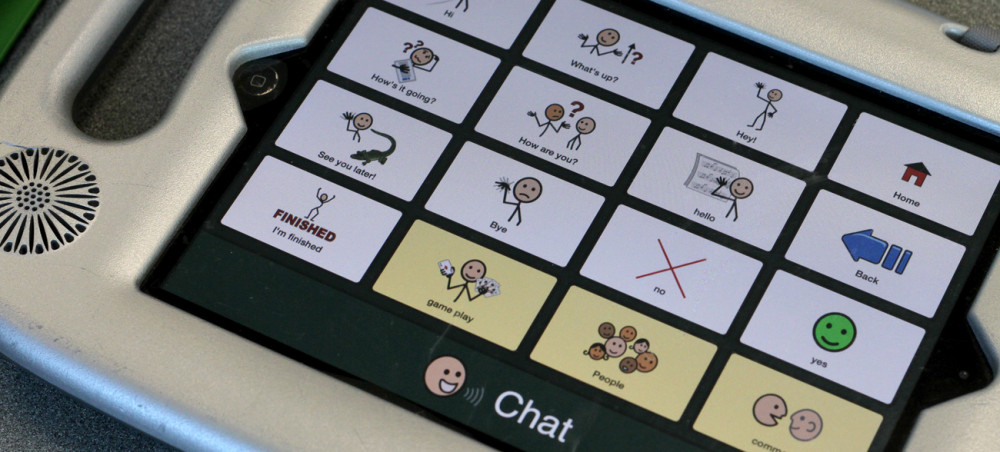Tech Assessment #1: Making Dreams a Reality with AT
 |
Figure 1. Assistive Technology
By creating a few lesson plans and getting more comfortable with them, I began to understand what exactly it consists of and the importance of including those items. Specifically, the ASSURE lesson plan has five separate segments that stand for each letter of "ASSURE." In the case of Enabling Dreams, the letter 'A' for "analyze learners" is known to contain audience, exceptionalities, and learning style which makes this the most important portion of the lesson plan for the success of students with disabilities. Teachers are not able to obtain the proper technology or material needed if they do not first understand what they are dealing with. Having prior knowledge about the disabilities of a student, or students, will allow the teacher to be better prepared to help the child prosper alongside the rest of the class. In the video, we see that the teachers are obviously aware of each student's condition and capabilities, therefore, they can make a wiser decision in what kind of technology is actually needed to help these students learn and work efficiently.
As a teacher, I would want all of my students, no matter the circumstances, to succeed and I will do my best to provide them with the knowledge and tools to get them there. After becoming more familiar with the types of disabilities, I can begin to revise activities to accommodate students with special needs. For instance, it is very common for students with speech impairments to use text-to-speech tools where they use automated voice to help them during presentations or simply carrying a conversation. This tool can also give students the chance to hear themselves actually speak. "Students of all
ages with learning difficulties enjoy hearing what they have written" (Kennedy, 2019). A text-to-speech tool that I am most familiar with is Voki. In the video, we actually see that Susanna Martini, who has cerebral palsy, uses a speech-to-text software that allows her to write her school assignments. Instead of using the old-fashioned pencil and paper, we can do online activities that allow disabled students to participate. I would also encourage more group activities because teachers should be able to "foster a cooperative learning environment and promote socialization" (Including Students, 2001). This allows students to assist another and be exposed to the different kinds of disabilities as well.
In terms of criteria, there are a few things I will be mindful of when designing more inclusive activities. My number one concern, besides students effectively learning, is their tendency to feel out of place. I would want to be sure that any activity I create does not make anyone feel left out or incapable. Also, the use of any digital tool should not interfere with the set time for the task and be kept at short amount of time as much as possible. Another important thing to consider is what kind of assistive technology or software is needed for the child's specific needs. For example, a regular keyboard and mouse would not be helpful to a student like Adrian, who needs special technology that responds to only the movement of his eyebrow.
Personally, I only have one close relative that has a speech impairment and can barely move her arms and legs, which means she requires special attention and assistance with everyday activities. Unfortunately, my family cannot afford to get her the technology she needs to actually communicate with us. Instead, she communicates through specific sounds she makes and eye movement to let us know what she wants or is thinking. However, now that I am more aware of the many kinds of softwares out there for the disabled, I wonder if it might have made a significant difference with the way she grew up. I hope, one day, she will get to experience assistive technology that will make my family realize it can benefit her the way it has for many other people.
|
References
Kennedy, G. (2019). The many benefits of text-to-speech software. Retrieved from https://www.clarosoftware.com/wp-content/uploads/The-Many-Benefits-of-Text-to-Speech-Software.pdf
Including students with disabilities in general education classrooms. (2001). Association for Supervision and Curriculum Development. Retrieved from http://www.ascd.org/publications/classroom-leadership/dec2001/Including-Students-with-Disabilities-in-General-Education-Classrooms.aspx


Hi Ms. Carino:
ReplyDeleteYou can be the catalyst for you relative. There are several free programs that have been created to give assistive technology to those who require them.
Your essay was very nicely written.
-j-